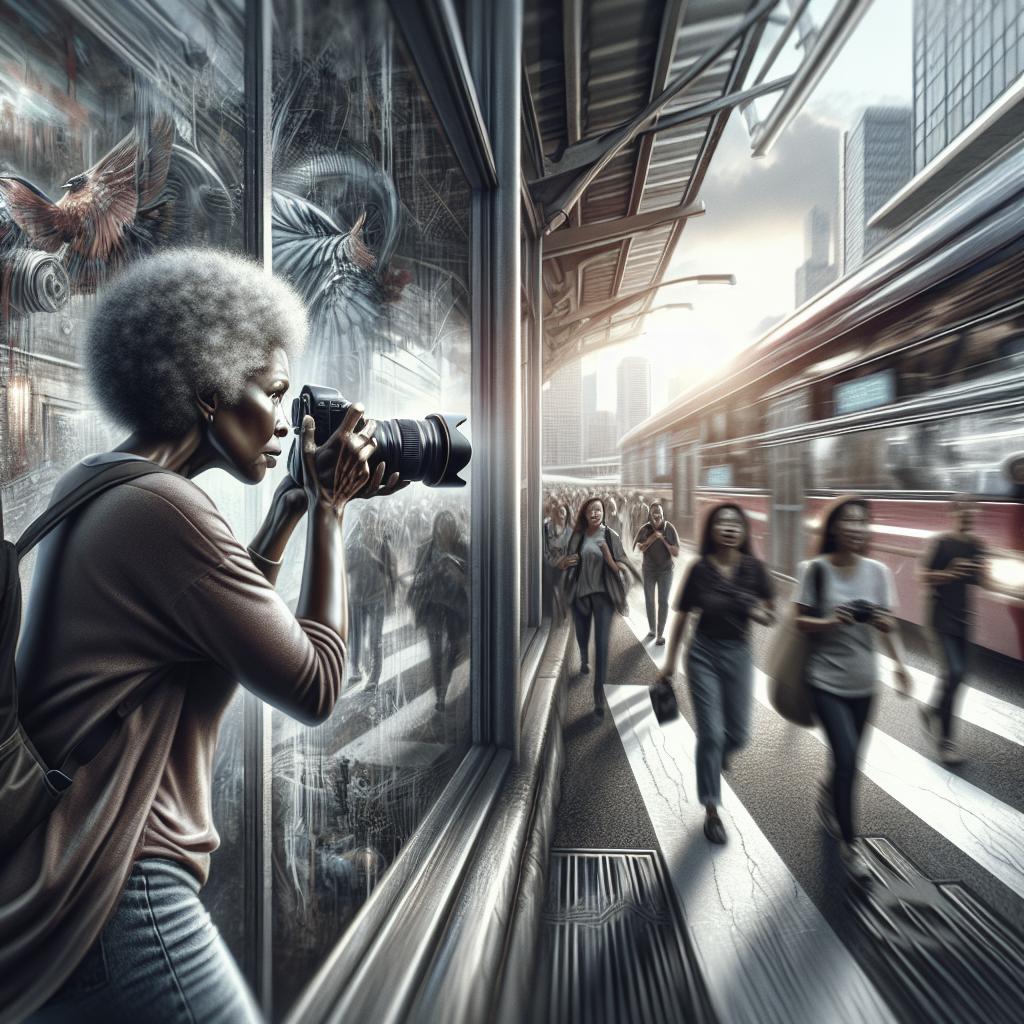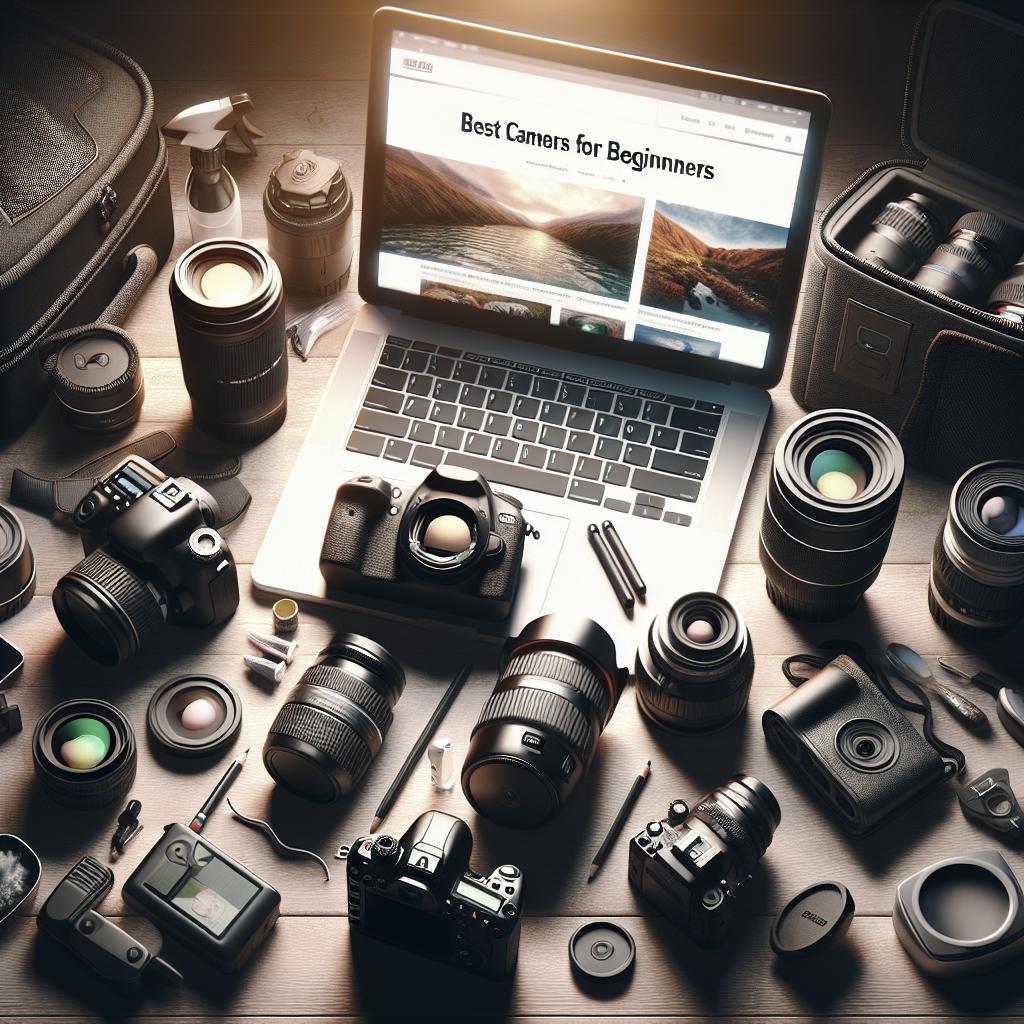“`html
Everything You Need to Know About Street Photography
Street photography is a unique form of art that captures raw, unvarnished slices of life. It can be incredibly rewarding but poses its own set of challenges. This comprehensive guide will walk you through everything you need to know about street photography. We’ll cover what street photography is, what makes a good street photograph, whether street photos need people, and if all street photography must be candid. Additionally, we’ll delve into the best camera equipment, a code of conduct to maintain while shooting, and a plethora of tips and ideas to get you started. Finally, we’ll wrap up with a Street Photography FAQ and a summary table for easy reference. By the end of this blog post, you’ll be equipped with the knowledge and inspiration to dive into the fascinating world of street photography.
What is Street Photography?
Street photography is a style of photography that focuses on capturing candid moments in public places. Unlike studio photography, where you have full control over the environment and subjects, street photography is more spontaneous. The goal is to capture unposed moments that tell a story about everyday life, often highlighting human interactions or unique street scenes.
One of the appealing aspects of street photography is its unpredictability. You never know what you might capture: a fleeting glance, an act of kindness, or an unusual event. It’s this spontaneity and raw emotion that make street photography so compelling.
What Makes a Good Street Photograph?
A good street photograph is one that tells a story. It’s not just about capturing an image; it’s about conveying an emotion, an idea, or a slice of life. Composition, light, timing, and the relationship between elements within the frame all play crucial roles in crafting a compelling shot.
Additionally, a strong street photograph usually has a focal point or subject that grabs the viewer’s attention. It might be a person, an interesting piece of architecture, or even a juxtaposition of elements that make the viewer think. The best street photographs are ones that invite viewers to look closer and engage with the image on a deeper level.
Do Street Photos Need People?
While many think of street photography as solely focusing on people, that’s not a strict rule. Street photography can include a wide range of subjects, including architecture, empty streets, or even abstract patterns found in urban environments. The key is the story the photograph tells and its ability to evoke an emotional response.
That said, people often add a layer of relatability and dynamism to street photographs. Capturing human subjects can offer more narrative depth and make the scene more engaging. However, some of the most striking street photographs are those that find beauty and intrigue in the ordinary, sometimes devoid of people.
Is All Street Photography Candid?
While candid shots are a hallmark of street photography, not all street photography is candid. Some street photographers engage with their subjects, asking for permission before taking a photo. This can result in a mix of posed and semi-candid shots that still capture the essence of the moment.
Both candid and posed approaches have their merits. Candid shots offer authenticity and raw emotion, while posed shots can provide a more composed and deliberate narrative. Ultimately, the choice between candid and posed photography is up to the photographer’s personal style and the story they wish to convey.
Camera Equipment for Street Photography
One of the best aspects of street photography is that it doesn’t require specialized equipment. Many photographers swear by the saying, “The best camera is the one you have with you,” whether that’s a professional DSLR, a mirrorless camera, or even a smartphone. What’s most important is your ability to capture compelling images.
However, having the right gear can make your street photography experience smoother. A small, lightweight camera with a fast prime lens (like a 35mm or 50mm) is typically ideal. These lenses are less obtrusive, offer quick focus, and work well in low light conditions. Additionally, carrying an extra battery and memory card can save you a lot of hassle.
Code of Conduct
Respect and Smile
Respect is paramount in street photography. Always consider the feelings and privacy of your subjects. If someone notices you taking their picture and seems uncomfortable, it’s best to either smile or approach them to explain your intentions. A warm, genuine smile can often defuse any tension and even result in a great interaction.
Being respectful goes a long way. The streets are public spaces, but remember that your subjects are humans with their own stories and boundaries. Approaching street photography with a respectful and polite demeanor can make all the difference.
Photographing Children
Photographing children in street photography requires extra caution. Some parents or guardians might not appreciate strangers taking photos of their kids, so it’s essential to be extra respectful and considerate. If you do take a picture of a child, it’s a good idea to ask for permission from their guardian.
Ensuring that you’re sensitive to the context and the people involved can save you from potential misunderstandings and conflicts. Always prioritize the well-being and privacy of children in your photography endeavors.
Photographing the Less Fortunate
Photographing the homeless or less fortunate requires great sensitivity. While street photography aims to capture real and raw scenes, it’s important not to exploit individuals’ hardships for artistic gain. Always approach such situations with empathy and respect.
Consider the power of your images and the stories they tell. Aim to highlight the dignity and humanity of your subjects rather than perpetuating stereotypes or objectifying them. In some cases, it may be best to entirely avoid taking the picture.
Street Photography Tips and Ideas to Get You Started
Know Your Gear and Have the Right Settings
Before hitting the streets, make sure you’re familiar with your camera and its settings. This enables you to react quickly to fleeting moments. Use aperture priority or manual mode to have greater control over exposure and depth of field.
Choosing the right settings, such as a fast shutter speed to capture motion and a wide aperture to create a pleasing bokeh effect, can make a big difference in your results. Practice makes perfect, so take the time to learn the ins and outs of your camera.
Shoot from a Distance
Shooting from a distance allows you to capture candid moments without intruding on people’s personal space. Use a zoom lens or crop images in post-processing to get closer looks without being too conspicuous. This approach can help you capture more genuine moments.
Besides, shooting from a distance provides a broader context for the scene, enriching the narrative of your images with the environment in which your subjects are placed.
Take Pictures of Street Musicians (Buskers)
Street musicians, or buskers, are vibrant subjects for street photography. These individuals are performing in public and are generally more open to being photographed. Capture the emotion and energy of their performance to create compelling images.
Buskers can also add a dynamic element to your street photographs, as the public often interacts with them, providing opportunities for multifaceted storytelling.
Shoot From Behind Glass
Shooting from behind glass, such as through café windows or bus stops, can create interesting layers and reflections in your images. This technique adds depth and complexity, making your photos more visually intriguing.
Reflections can also introduce a sense of abstraction, encouraging viewers to look more closely and perhaps decipher the various elements in the photograph.
Photograph the Backs of People
Contrary to popular belief, photographing people’s backs can be very effective in street photography. This technique can suggest anonymity while still conveying emotion and narrative.
For example, capturing someone walking away can evoke a sense of journey or solitude. It can also protect the privacy of your subjects, making it a considerate way to document scenes.
Photograph Street Animals
Street animals, such as dogs and pigeons, can make for fascinating subjects. They are often less self-conscious than human subjects and offer a different perspective on life in the streets.
Capturing the interaction of street animals with their environment or people can also add a unique dimension to your street photography portfolio.
Set the Stage
Sometimes, creating a compelling street photograph involves a bit of patience and planning. Find an interesting backdrop or location and wait for the right subject or event to come into the frame. This method allows you to exercise more control over the composition.
Waiting for the right moment in a pre-selected spot lets you focus on elements like light, shadow, and background, ensuring that all components align to create a striking image.
Capture Silhouettes
Silhouettes can add drama and mystery to your street photographs. Position your subjects against a strong light source, such as the setting sun, to turn them into dark outlines against a brightly lit background.
This technique emphasizes shapes and forms, creating a more graphical element that can make your photos stand out.
Use Contrasty Light
High-contrast lighting conditions can produce striking images that highlight shapes, textures, and details. Look for situations where light and shadow create strong visual elements.
Whether it’s a shaft of light piercing through the urban landscape or the play of shadows on a wall, contrasting light can introduce drama and mood to your photographs.
Wait for the Decisive Moment
The concept of the “decisive moment” was popularized by famed street photographer Henri Cartier-Bresson. It refers to capturing a fleeting, yet significant moment that tells a compelling story.
Patience is key here. Observe the scene, anticipate the action, and be ready to press the shutter at just the right time. This skill comes with practice and a keen observational eye.
Learn the Right Way to Approach Strangers
Approaching strangers for a photograph can be daunting, but it’s an essential skill for street photographers. Learn to read body language to gauge if someone might be open to being photographed. A polite approach and clear communication about your intentions can often yield positive results.
Always be prepared for rejection and respect people’s wishes. Some photographers carry a small album of their work to show examples and build trust with their subjects.
Show Gratitude
Whether you’ve taken a candid shot or engaged directly with your subject, it’s always good to show gratitude. A simple thank you or offering to share the photo can go a long way in leaving a positive impression.
Gratitude not only builds goodwill but also makes the process more rewarding for both the photographer and the subject, fostering a positive atmosphere around your street photography practice.
Street Photography FAQ
Q: Do I need special permission to take street photos?
A: Typically, you don’t need special permission to shoot in public spaces, but laws can vary by location. Always research local regulations and err on the side of caution to avoid misunderstandings or legal issues.
Q: How do I handle confrontation?
A: Stay calm and respectful. Explain your intentions and show your photographs if necessary. If someone requests you to delete their photograph, it’s generally best to comply to avoid further issues.
Q: What’s the best time of day for street photography?
A: Golden hours (early morning and late afternoon) provide beautiful, soft light. However, midday can offer harsh, contrasting light that can be interesting to work with. Nighttime street photography can also yield unique and dramatic images.
Summary of Main Points
| Topic | Summary |
|---|---|
| What is Street Photography? | Captures candid moments in public spaces, telling stories about everyday life. |
| What Makes a Good Street Photograph? | Combines composition, light, timing, and a focal point to tell a compelling story. |
| Do Street Photos Need People? | Not necessarily; subjects can be varied, including architecture and abstracts. |
| Is All Street Photography Candid? | Mostly, but posed and semi-candid shots are also common. |
| Camera Equipment | Use what you have, but lightweight cameras with fast prime lenses are ideal. |
| Code of Conduct | Be respectful, especially when photographing children or the less fortunate. |
| Tips and Ideas | Know your gear, shoot from a distance, capture musicians, use glass reflections, etc. |
| FAQ Highlights | Permissions, handling confrontation, and best times for shooting. |
Related Articles
- The Ultimate Guide to Nighttime Street Photography
- Mastering Composition: Tips for Stunning Photos
- Exploring Urban Landscapes: A Photographer’s Journey
“`


